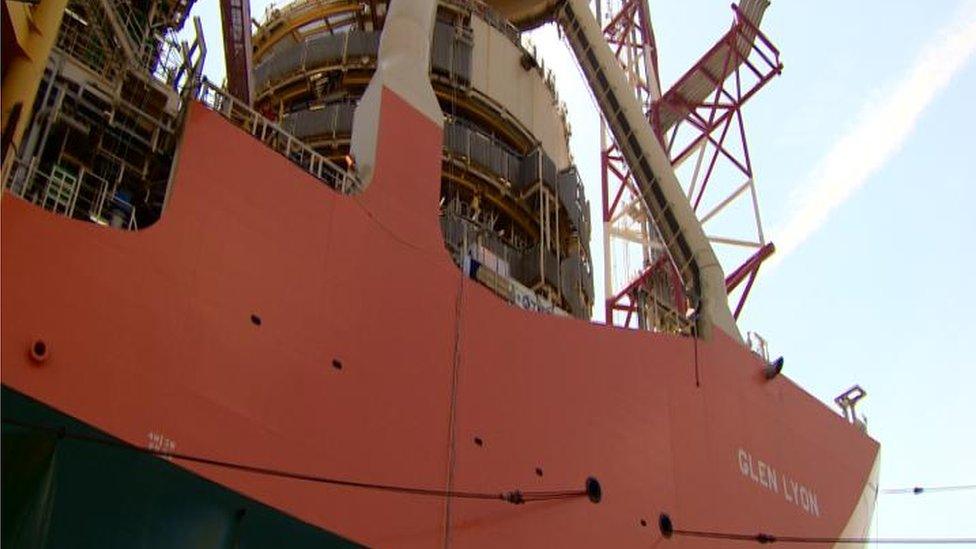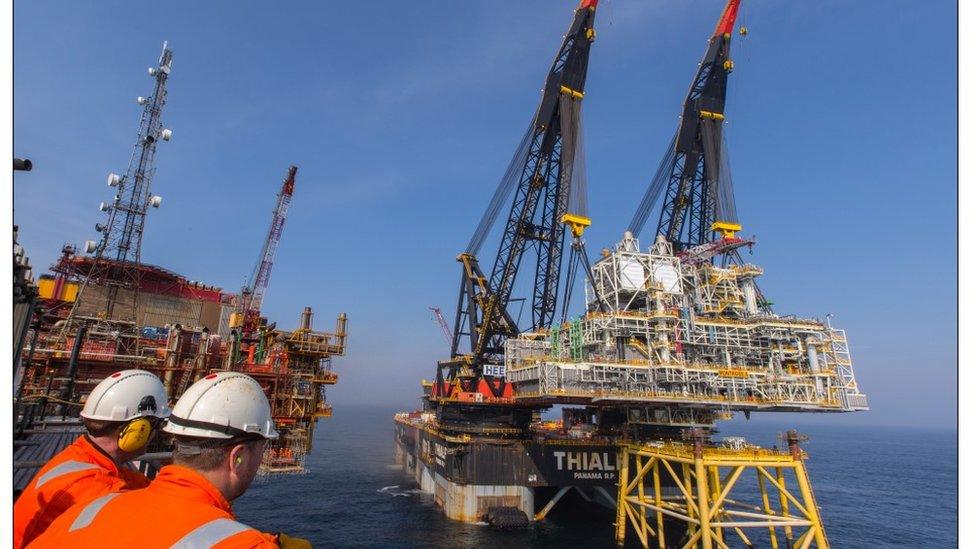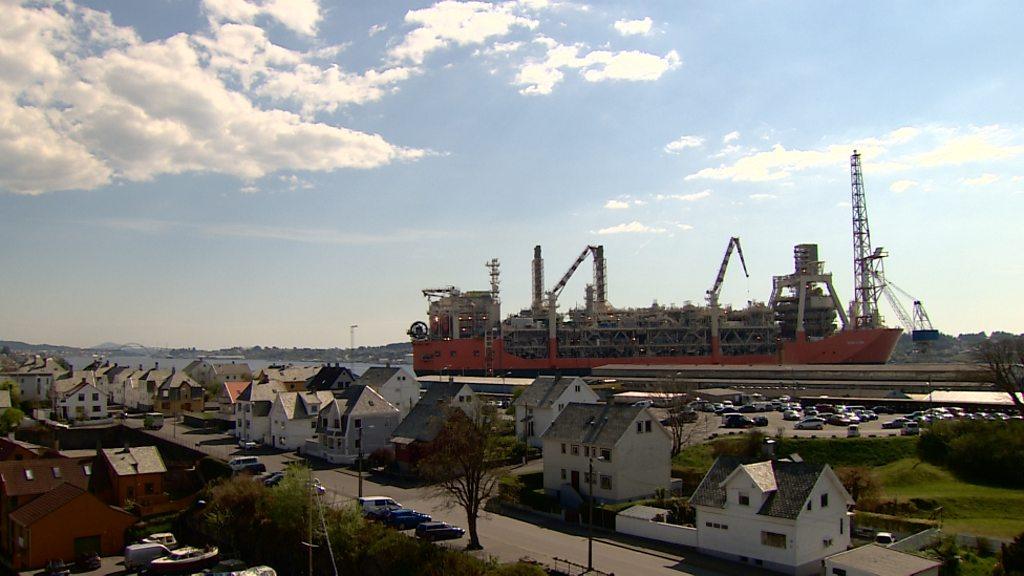Biggest harsh water oil ship Glen Lyon prepares to sail
- Published
The Glen Lyon can hold 800,000 barrels of oil
It is the biggest oil production ship in the world for harsh waters and it's about to set sail for the seas off Scotland.
The Glen Lyon facility will anchor in the deep waters of the Atlantic, west of Shetland, and is expected to produce 400 million barrels of oil over the next two decades.
The vessel is packed with technology to make production cheaper and with the oil price low, that's exactly what the industry is trying to achieve across the board.
The top half of the huge Floating Production, Storage and Offloading facility (FPSO), looks like a traditional platform with mile after mile of pipes, a giant stack where the flare will burn and of course a helideck.
But the bottom half looks like an ordinary - if very big - ship. And soon this will take up permanent residence in the unforgiving environment west of Shetland.
Mark Thomas, the new man in charge of BP's North Sea operation, tells me their focus is increasingly shifting to the north Atlantic.
He said: "For BP, west of Shetland is our future. What west of Shetland will be to BP in the 2020, 2030 decades is what the Forties system was to BP in the 80s and 90s.
"We will be known, I believe, as the operator of choice and our brand will be associated with west of Shetland for the foreseeable future."

There are miles of pipes aboard the Glen Lyon
Forties was the largest field in the North Sea and produced its first oil in 1975. Within seven years it had produced a billion barrels of Brent Crude.
BP has invested more than £4bn in this development.
The Glen Lyon production ship was towed from South Korea by three ocean-going tugs.
In the Norwegian port of Haugesund, it is going through final checks before the three-day journey to its final destination.
Operational manager Keith O'Donnell said: "Some of the mooring facilities on board have to be maintained in a horizontal position to protect them during the long tow.
"Once we get here, close to the field, we can release some of those sea fastenings.
"We need divers to be able to do that work and so an inshore location is essential."
As the North Sea's remaining reserves continue to deplete, oil companies are increasingly focusing on the hostile waters of the North Atlantic.

The ship was towed from South Korea by three ocean-going tugs
BP is already investing in the Clair and Clair Ridge projects while Total has recently begun producing gas from the Laggan-Toremore fields.
Jeremy Cresswell, energy editor at the Press and Journal newspaper in Aberdeen, says the area represents the future of UK oil.
"There are bound to be further significant discoveries. There are others sitting around out there right now.
"In a sense, perhaps the adventure west of Shetland has barely begun."
The first barrel is expected to flow through Glen Lyon at the end of this year, with production predicted to continue until 2035.
- Published11 May 2016

- Published11 May 2016
